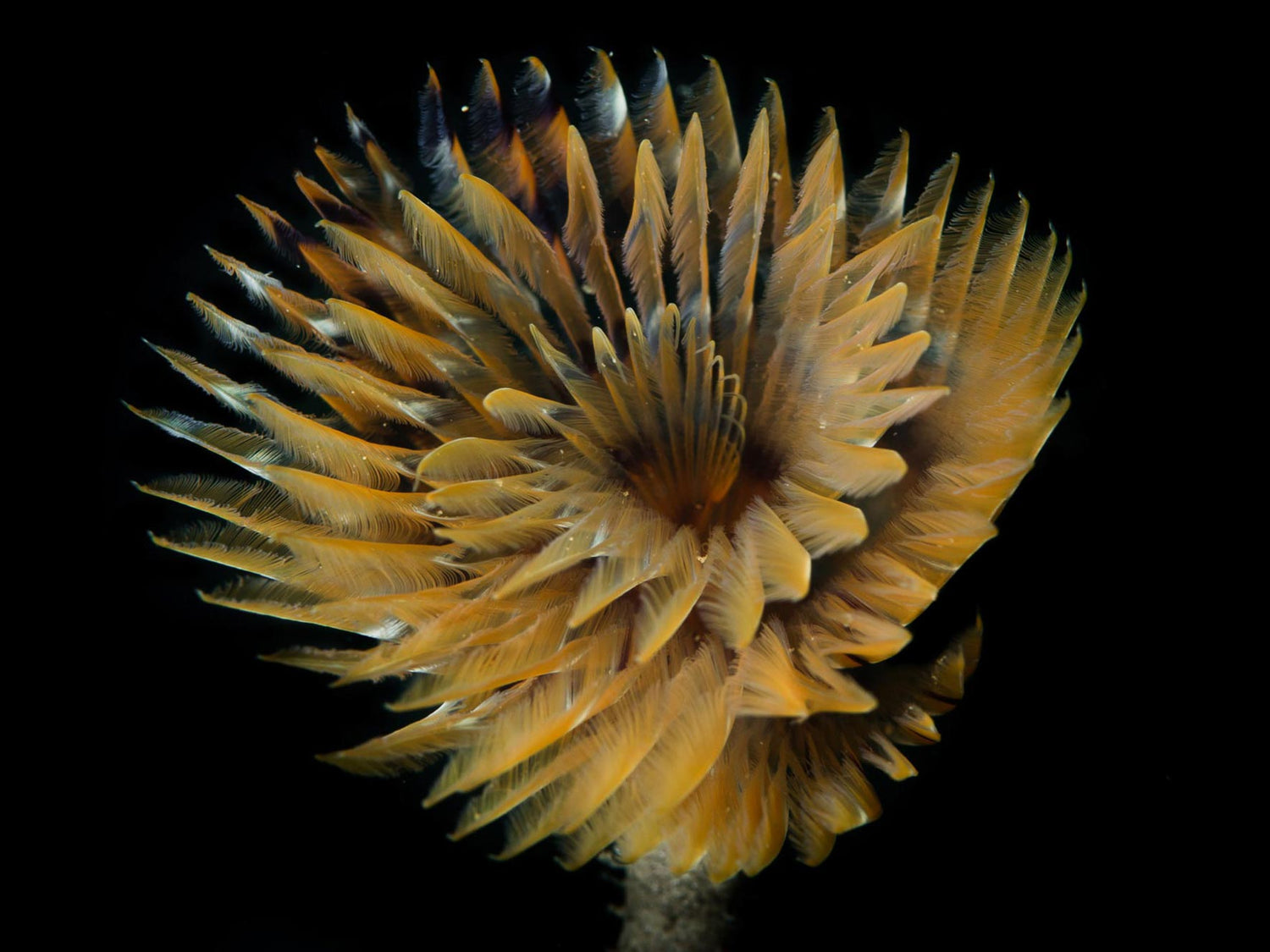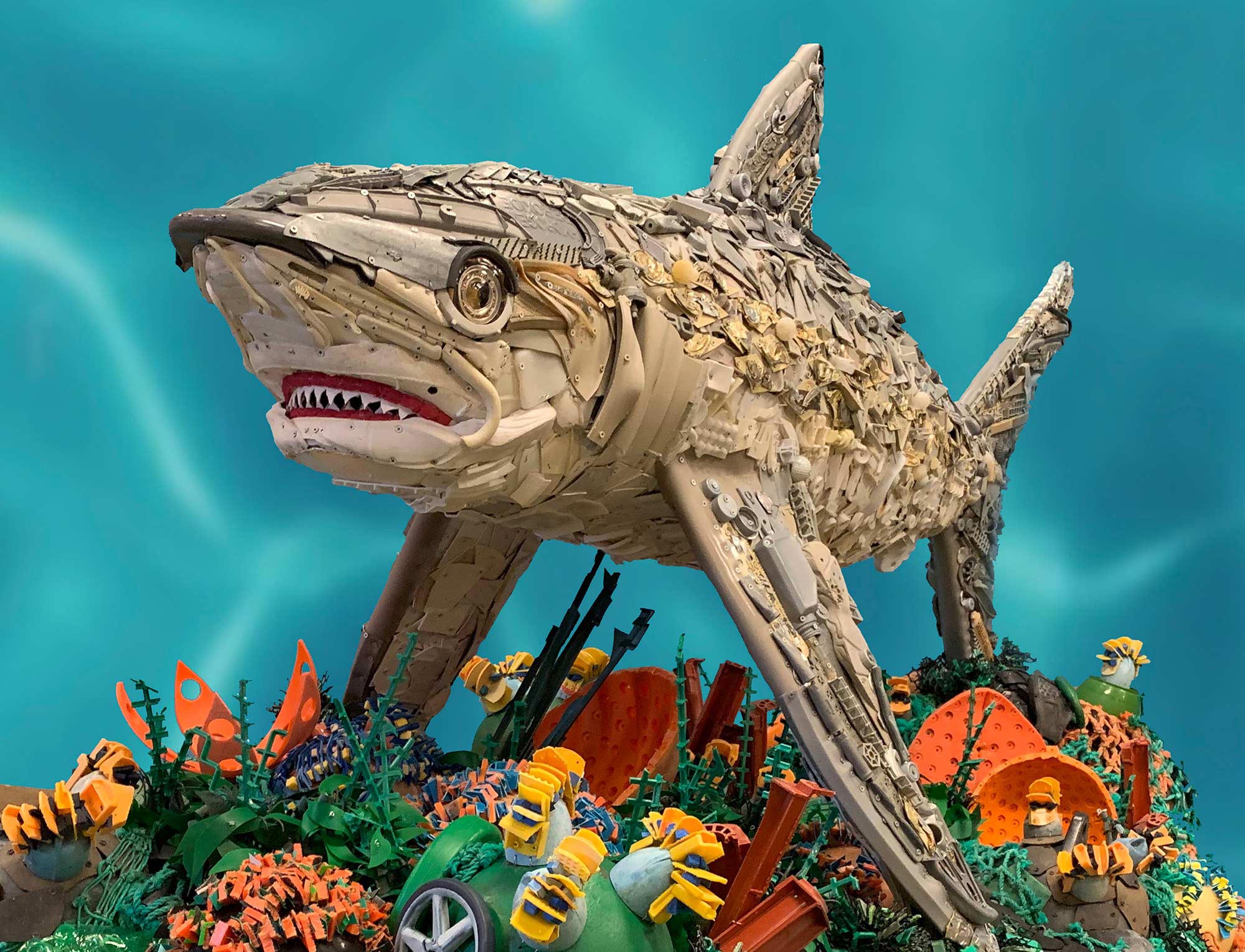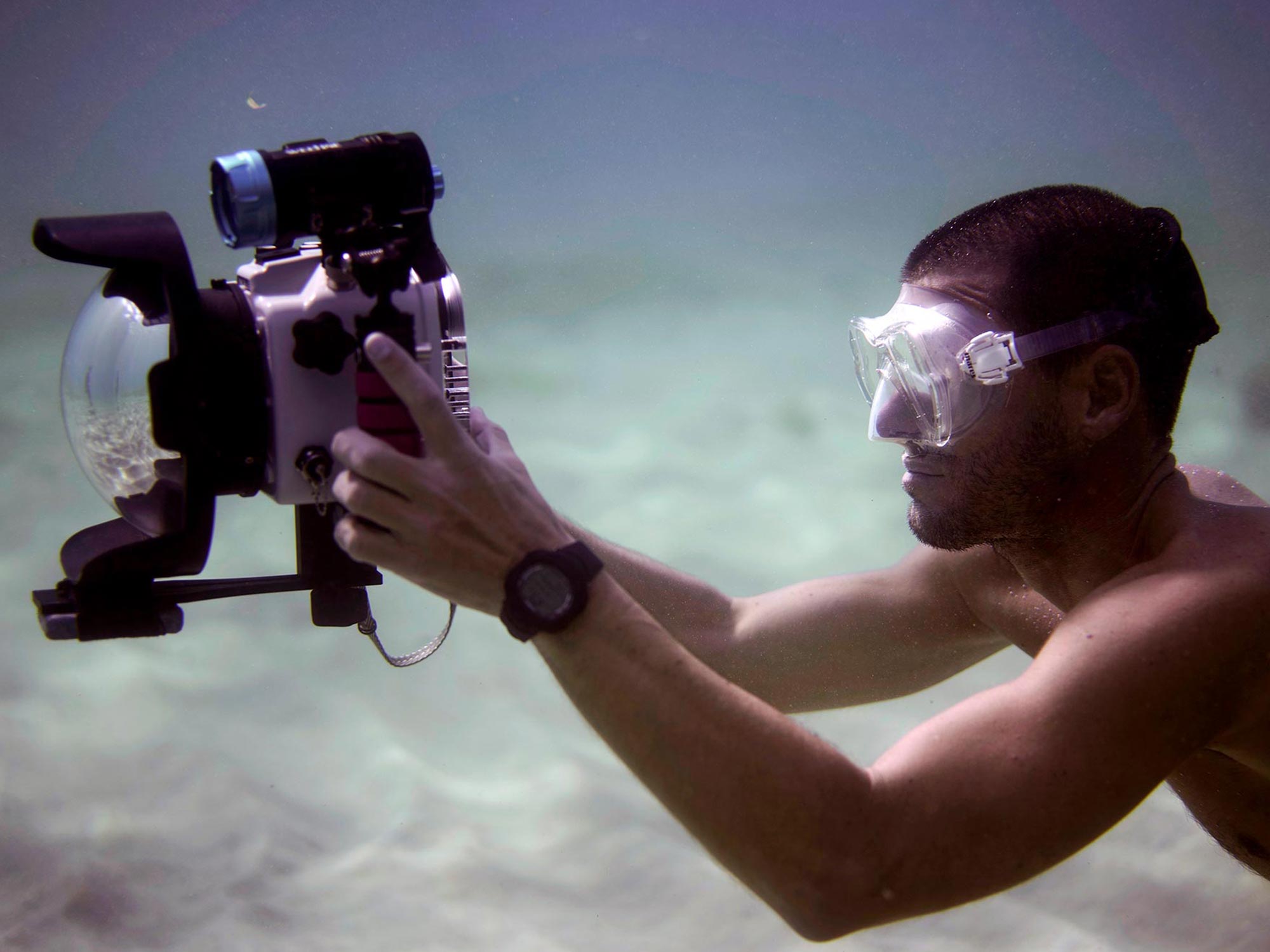By Lorenzo Terraneo
Beautiful Worms Part I | Sabella spallanzanii

Out of all the Mediterranean subjects that I love to shoot, there are some very particular marine worms that resemble colorful flowers. The part of the worm that normally stays hidden in the protective tube that they build is hardly appealing because it has the classic shape of a worm. © Lorenzo Terraneo 2021

In the cephalic zone, on the other hand, they are provided with thread-like gills covered in cilia and mucous glands (whose purpose is to entangle the food particles), the higher part of the cephalic zone is the one we can see and shoot. © Lorenzo Terraneo 2021

The shapes that the gills, made up of long and colorful threads, assume following the sea current are always different. © Lorenzo Terraneo 2021

© Lorenzo Terraneo 2021

The “spyrograph” or Sabella Spallanzani, owes its Italian name to the concentric spiral shape of the gills, on which it is interesting to play with lights, background color, diaphragm and camera angles. © Lorenzo Terraneo 2021

© Lorenzo Terraneo 2021

The tube can reach relevant length, up to 20-25 cm, and usually if you look closely you can find other organisms (smaller) that climb on it to hunt better or to hide. © Lorenzo Terraneo 2021

You can also find parasites that colonize the tube awaiting the passage of a fish they can grab onto. © Lorenzo Terraneo 2021
Beautiful Worms Part II | Serpula vermicularis protula tubularia

Another marine Mediterranean worm of great peculiarity and beauty is without a doubt the Serpula vermicularis protula tubularia. It has smaller dimensions compared to the Sabella Spallanzanii, so it is more difficult to isolate in pictures from the substrate it has built its tube on. © Lorenzo Terraneo 2021

© Lorenzo Terraneo 2021

Also, it is perhaps even faster in retiring than Sabella Spallanzanii in the protective tube when it perceives the slightest movement. © Lorenzo Terraneo 2021

The trick is to get closer really slowly and to hope that the identified animal is distracted and is not going to react instantly, so we can have the possibility of taking a few shots. © Lorenzo Terraneo 2021

The Serpula Vermiculariis has a bright red colour, but it can also be yellow or orange. The “Protulatubolaria,” the littlest of all, normally withdraws in its tube at the first camera flash if it hasn’t done so already while the photographer attempts to move closer. © 2021 Lorenzo Terraneo

© Lorenzo Terraneo 2021
 Ambassador Lorenzo Terraneo, from Milan, Italy, works in the world of communication and web marketing and is a journalist enrolled in the Register. In 2010, he joined a strong passion for the sea and diving with one for photography that has accompanied him since his first analog Nikon SLR. Passionate about marine and terrestrial biology, he is always looking to recreate the magical meeting between the wonders of nature and human emotions aroused by unusual shapes and colors. Therefore, not naturalistic photos in the strict sense, but moments of artistic beauty according to the human canon, which nature expresses incessantly. Read more...
Ambassador Lorenzo Terraneo, from Milan, Italy, works in the world of communication and web marketing and is a journalist enrolled in the Register. In 2010, he joined a strong passion for the sea and diving with one for photography that has accompanied him since his first analog Nikon SLR. Passionate about marine and terrestrial biology, he is always looking to recreate the magical meeting between the wonders of nature and human emotions aroused by unusual shapes and colors. Therefore, not naturalistic photos in the strict sense, but moments of artistic beauty according to the human canon, which nature expresses incessantly. Read more...
Additional Reading
Virtual Exhibition: Wonderful Creatures and Creative Visions
An Insider's Guide to Blackwater Photography
Creature Feature: the Flashing Disco Clam
Every Little Stretch of Coast is Dying, We Need to Act Now!
Super Macro Underwater Photography Techniques
Maintaining Your Macro Eye | Using Underwater Techniques on Land













